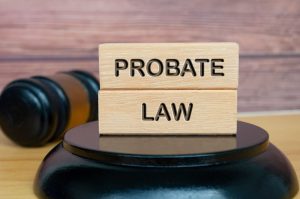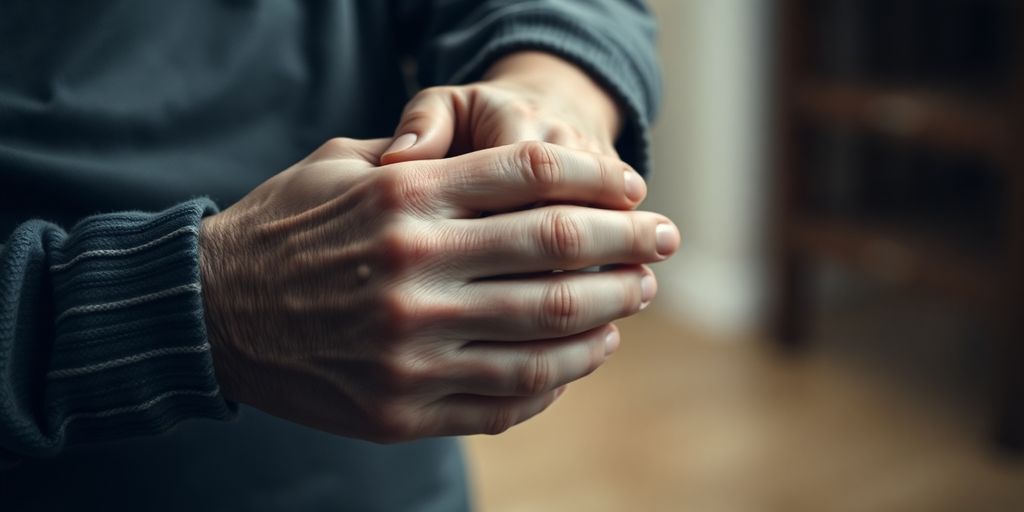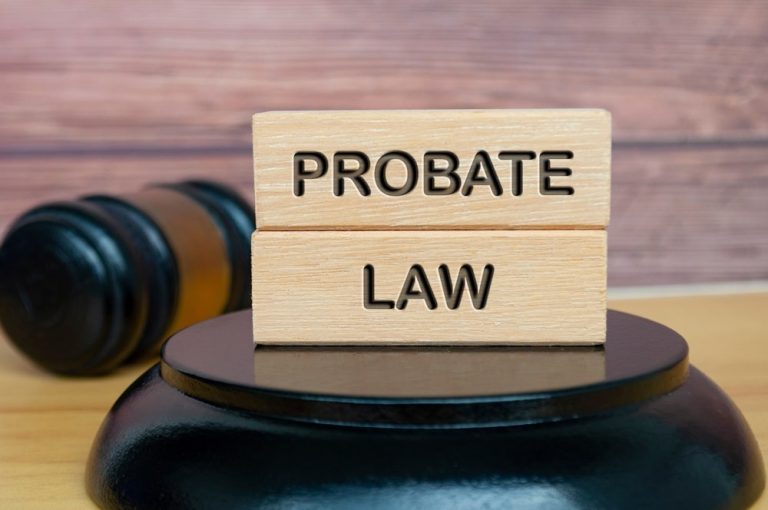Nursing home abuse is a critical issue that affects many elderly residents, often going unnoticed or unreported. Understanding the different types of abuse is essential for identifying and preventing these harmful actions. Here’s a breakdown of the main types:
Identifying Physical Abuse
Physical abuse in nursing homes is one of the more visible forms of maltreatment. It involves any action that causes physical harm to a resident, such as hitting, shoving, or inappropriate use of restraints. Victims may exhibit bruises, cuts, or broken bones. Family members should be vigilant for unexplained injuries or frequent trips to the emergency room. It’s crucial to recognize these signs early to take action.
Recognizing Emotional Abuse
Emotional abuse, though less visible, can be just as damaging as physical harm. It includes verbal assaults, threats, humiliation, and isolation. Residents may become withdrawn, depressed, or anxious. They might also show fear or discomfort around certain staff members. Observing changes in a loved one’s behavior is key to identifying emotional abuse.
Detecting Financial Exploitation
Financial exploitation involves the unauthorized use of a resident’s funds or property. This can include stealing money, forging signatures, or coercing a resident to alter their will. Families should monitor bank statements and be wary of sudden financial changes. It’s important to ensure that the resident’s financial affairs are in order and to question any suspicious transactions. Keeping a close eye on financial activity can help prevent exploitation.
Recognizing the Signs of Nursing Home Neglect
Physical Indicators of Neglect
Spotting physical signs of neglect in nursing homes can be quite challenging. Families need to be vigilant when visiting loved ones. Look for bedsores, bruises, or unexplained injuries. These might suggest that residents aren’t getting the care they need. Malnutrition and dehydration are also red flags. If a resident appears unusually thin or weak, it could be due to neglect. Poor hygiene, like dirty clothes or unwashed hair, can indicate that basic personal care is being ignored.
Behavioral Changes in Residents
Changes in behavior can be a subtle but telling sign of neglect. If a resident becomes withdrawn, anxious, or depressed, it might be because of the environment they’re in. Sometimes, they might express a desire to leave the facility or show fear around certain staff members. These behavioral shifts can signal emotional neglect or mistreatment. It’s crucial to notice these changes early and take action.
Environmental Clues of Neglect
The condition of the nursing home itself can provide clues about neglect. Walk around and observe the cleanliness of the facility. A poorly maintained environment, with dirty floors or foul odors, can indicate neglect. Check if the living areas are safe and free from hazards. If you notice broken equipment or unsafe conditions, it’s a sign the facility might not be providing adequate care. An overcrowded or understaffed facility can also be a breeding ground for neglect.
Recognizing these signs early can help protect your loved ones and ensure they receive the care they deserve. If you suspect neglect, it’s important to take steps to address the issue promptly. Elder abuse in nursing homes can manifest through various signs, including sudden mood swings, personality changes, refusal to take medication, and unexplained overdoses. Recognizing these indicators is crucial for ensuring the safety and well-being of residents.
Steps to Gather Evidence for a Nursing Home Abuse Case
Documenting Physical Evidence
Building a solid case against a nursing home begins with documenting physical evidence. Photographs are crucial; capturing images of injuries, poor living conditions, or any visible signs of neglect can strongly support your claims. Always make sure these photos are timestamped. In addition to photographs, videos can be equally effective in showing ongoing issues like unsanitary conditions or unsafe environments. It’s also helpful to keep a journal detailing any incidents or observations that raise concern. Consistent documentation can paint a clear picture of the abuse or neglect happening.
Collecting Medical Records
Medical records serve as a backbone in proving nursing home abuse. Obtain comprehensive medical records from both the nursing home and any external healthcare providers. These records should be scrutinized for inconsistencies or unexplained treatments. For instance, repeated hospital visits for dehydration or malnutrition might indicate neglect. Look for discrepancies in the records, such as missing information or conflicting reports, which could suggest an attempt to hide the truth. Having a complete set of medical documentation is essential to correlate physical evidence with medical findings.
Gathering Witness Statements
Witness statements can significantly bolster your case. Identify potential witnesses such as other residents, visiting family members, or even staff who might be willing to speak out. It’s beneficial to approach these individuals with sensitivity, understanding that they might be hesitant to get involved. When collecting statements, ensure they are detailed, noting specific incidents or behaviors they observed. Written statements are ideal, but verbal accounts can also be documented if witnesses are more comfortable speaking. These testimonies can provide a narrative that supports the physical and medical evidence collected.
The Role of Photographic Evidence in Abuse Cases
Capturing Injuries and Living Conditions
Photographs are a powerful tool when it comes to documenting nursing home abuse. They can capture the stark reality of injuries and living conditions, providing undeniable evidence of neglect or mistreatment. Taking clear, timestamped photos of any visible injuries, such as bruises or bedsores, is crucial. Equally important is photographing the resident’s environment, capturing details like soiled linens or unsafe premises.
Using Photos to Support Claims
Photos serve as a visual record that can support claims of abuse or neglect. They help bridge the gap between allegations and proof, making it easier for authorities or legal representatives to understand the severity and nature of the abuse. When combined with other forms of evidence, like documented records, photographs can create a compelling case against the perpetrators.
Legal Considerations for Photographic Evidence
When taking photographs for legal purposes, it’s important to consider privacy and consent. Ensure that the process respects the resident’s dignity and complies with legal standards. Consulting with a legal expert, such as a nursing home abuse lawyer, can provide guidance on how to properly document and submit photographic evidence without infringing on any legal boundaries.
Utilizing Medical Records to Support Abuse Allegations
Accessing Nursing Home Records
Medical records are vital when building a case for nursing home abuse. They provide a detailed history of the resident’s health and treatments, revealing patterns that might indicate neglect or mistreatment. To access these records, families usually need to request them from the nursing home. If the facility is part of Medicare or Medicaid, obtaining these records should be more straightforward. Families should look for any inconsistencies or unexplained treatments that could suggest abuse.
Identifying Inconsistencies in Medical Documentation
When reviewing medical records, it’s crucial to identify any discrepancies. Look for:
- Unexplained injuries such as bruises or fractures.
- Hospitalizations for issues like dehydration or malnutrition, which often hint at neglect.
- Sudden changes in medication without a clear reason.
These inconsistencies can highlight areas where the nursing home might have failed in their duty of care.
Correlating Medical Records with Abuse Claims
Once inconsistencies are identified, the next step is correlating these findings with specific abuse claims. This process involves:
- Mapping out timelines of medical records against reported incidents.
- Comparing the nursing home’s records with external medical evaluations.
- Seeking expert opinions to interpret complex medical data.
Medical records serve as a powerful tool in demonstrating neglect or abuse, helping to substantiate claims in legal proceedings.
The Importance of Witness Testimonies
Identifying Potential Witnesses
Witness testimonies can be a game-changer in nursing home abuse cases. They provide firsthand accounts that can substantiate claims of abuse or neglect. Identifying potential witnesses is crucial. These witnesses might include other residents, family members visiting the facility, or employees who have observed questionable practices. It’s important to keep an open dialogue with anyone who might have seen or heard anything unusual. Even casual conversations can reveal potential witnesses.
Interviewing Staff and Residents
When it comes to interviewing staff and residents, approach is everything. You want to gather information without making anyone feel uncomfortable or defensive. Start with open-ended questions to encourage detailed responses. For staff, ask about their typical day-to-day duties and any irregularities they might have noticed. Residents, on the other hand, might provide insights into their daily experiences and any changes in their environment or treatment. Remember, sometimes the smallest details can be significant.
Legal Procedures for Obtaining Testimonies
Securing witness testimonies involves understanding legal procedures. This might mean working with a legal professional who can guide you through the process of obtaining affidavits or depositions. These legal documents are critical as they formalize the witness’s account. In some cases, expert witnesses, such as those in medical malpractice cases, might be necessary to establish negligence or clarify complex situations. Knowing the right steps to take ensures that the testimonies are not only collected but are also admissible in court. This can be a lengthy process, but it’s vital for building a strong case.
Legal Framework for Nursing Home Abuse Cases
Understanding State and Federal Regulations
When it comes to nursing home abuse cases, understanding the legal framework is essential. The laws governing these cases are a mix of federal and state regulations. At the federal level, the Nursing Home Residents Bill of Rights provides a baseline of protections for residents, ensuring their dignity and care are prioritized. Many states build on these federal laws, adding layers of protection tailored to their specific needs.
Filing Complaints with Regulatory Bodies
If you suspect abuse, filing a complaint with the appropriate regulatory body is a crucial step. This typically involves contacting state agencies responsible for elder care oversight. These agencies have the authority to investigate allegations and enforce penalties. Documenting the abuse thoroughly can significantly aid in the investigation process.
Navigating Legal Proceedings
Legal proceedings in nursing home abuse cases can be complex. They may involve civil claims, such as personal injury lawsuits, or even criminal charges against the perpetrators. Evidence collection is vital, and this can include medical records, witness statements, and photographic evidence. It’s advisable to seek the assistance of an attorney who specializes in elder abuse to guide you through the process. They can help ensure that all legal avenues are explored and that justice is served.
Hiring a Nursing Home Abuse Attorney
Selecting the Right Legal Representation
Finding the right attorney to handle a nursing home abuse case is crucial. Experience in elder law and a proven track record in similar cases can make a significant difference. Look for attorneys who specialize in nursing home abuse, as they will be familiar with the complexities of these cases. Consider the following when selecting an attorney:
- Experience:Ensure the attorney has a history of handling nursing home abuse cases successfully.
- Reputation:Check reviews and testimonials from past clients to gauge their satisfaction.
- Communication:Choose someone who communicates clearly and keeps you informed throughout the process.
Understanding the Attorney’s Role
An attorney in a nursing home abuse case does more than just represent you in court. They gather evidence, interview witnesses, and work with experts to build a strong case. They also help in negotiating settlements or pursuing litigation if necessary. Attorneys can:
- Collect and analyze medical records to identify inconsistencies or signs of neglect.
- Coordinate with medical experts to assess the extent of injuries or neglect.
- Liaise with law enforcement and regulatory bodies to ensure all legal protocols are followed.
Benefits of Legal Expertise in Abuse Cases
Hiring a skilled attorney can provide peace of mind and increase the chances of a favorable outcome. They bring expertise in navigating the legal system and can handle the complexities of your case efficiently. Benefits include:
- Comprehensive Case Evaluation:Attorneys can evaluate the merits of your case and advise on potential outcomes.
- Strategic Planning:They develop a strategy tailored to the specifics of your case, aiming for the best possible outcome.
- Legal Advocacy:Attorneys advocate on your behalf, ensuring your loved one’s rights are protected and justice is sought.
If you suspect your loved one has experienced neglect or abuse in a nursing home in Georgia, Contact Jonathan R. Brockman, P.C. for expert legal guidance. Dedicated attorneys focus on addressing these serious issues, striving to achieve justice for victims. Learn more about their services.
Reporting Nursing Home Abuse to Authorities
Identifying the Appropriate Agencies
When you suspect nursing home abuse, it’s vital to report it to the right authorities. Local law enforcement should be your first point of contact, especially if there’s immediate danger. They can quickly respond and ensure the safety of the resident. Additionally, state agencies that handle elder affairs, like Adult Protective Services, are crucial. They have the resources to investigate and address the abuse. It’s also wise to notify the nursing home administration as they are responsible for addressing such complaints.
Filing a Formal Complaint
Filing a formal complaint is a structured way to ensure the abuse is documented and investigated. Begin by gathering all relevant information: names, dates, and specific incidents. Write a detailed account of what occurred and include any evidence you have, such as photos or witness statements. Submit this complaint to the appropriate agency. Many states have online portals or hotlines to make this process easier.
Ensuring Follow-Up and Accountability
After filing a complaint, follow up with the agency to ensure the case is being investigated. Keep records of all communications and any updates on the case. This not only helps in tracking the progress but also holds the authorities accountable. Remember, persistence is key. If you feel the response is inadequate, consider reaching out to advocacy groups for additional support.
Challenges in Proving Nursing Home Abuse
Overcoming Evidence Collection Barriers
Proving nursing home abuse is no small task. It’s a complex process that involves gathering concrete evidence to support claims. One major hurdle is the lack of physical evidence. Many times, the signs of abuse are not immediately visible or are easily explained away by the facility’s staff. For instance, bruises might be attributed to a fall, or sudden behavioral changes could be dismissed as a result of aging or medical conditions. Collecting evidence, such as medical records or witness statements, becomes crucial. However, these records are often tightly controlled by the facility, making it difficult for families to access them without legal intervention.
Dealing with Uncooperative Facilities
Facilities may not always be forthcoming with information. They might limit access to records or even intimidate potential witnesses to prevent them from speaking out. Families often encounter resistance when trying to gather evidence, and this can be a significant barrier. The facility’s legal team may also try to discredit claims by providing alternative explanations for injuries or behavioral changes. Legal action, such as subpoenas, might be necessary to compel facilities to release pertinent information. Expert witnesses can play a crucial role here, providing insights and evidence to support claims of mistreatment.
Addressing Victim Reluctance to Testify
Victims themselves may be unwilling or unable to testify. Fear of retaliation, cognitive decline, or emotional trauma can prevent them from speaking out about their experiences. This reluctance can be a major obstacle in proving abuse. It’s essential to create a supportive environment where victims feel safe to share their stories. Legal advocates and family members can help by reassuring victims and explaining the importance of their testimony in seeking justice. Additionally, corroborating evidence from other sources, like medical records or photographs, can strengthen the case even if the victim is unable to testify.
The Impact of Subpoenas in Gathering Evidence
Understanding the Subpoena Process
In legal battles involving nursing home abuse, subpoenas are a key tool. They compel individuals or organizations to provide evidence or testify in court. Subpoenas can be crucial in obtaining evidence that is otherwise inaccessible. To issue a subpoena, a legal request must be formally filed, often requiring a lawyer’s expertise. The process involves drafting the subpoena, serving it to the relevant parties, and ensuring compliance. It’s a methodical approach, ensuring that all necessary information is gathered to support the case.
Types of Evidence Accessible via Subpoenas
Subpoenas can unlock a variety of evidence types crucial for a nursing home abuse case. Here are some examples:
- Medical Records:Subpoenas can demand complete medical records, which might reveal discrepancies or omissions in treatment.
- Staff Testimonies:They can require staff members to testify, providing insights into the care environment and potential misconduct.
- Facility Documentation:Internal reports, logs, and other documents can be subpoenaed to uncover patterns of neglect or abuse.
These pieces of evidence can paint a clearer picture of the situation, aiding in establishing a strong case.
Legal Support in Issuing Subpoenas
Navigating the legal system to issue subpoenas can be complex. It’s often beneficial to work with a legal professional, like those at the Ori Law Group, who specialize in nursing home abuse cases. They can guide families through the process, ensuring that all subpoenas are correctly filed and served. Legal experts can also help interpret the gathered evidence, making it easier to build a compelling case against the offending facility. With the right legal support, families can seek justice and hold abusive institutions accountable.
Protecting the Rights of Nursing Home Residents
Ensuring Resident Safety and Well-being
Nursing homes have a legal duty to keep their residents safe and well. This goes beyond just providing basic care. It means creating an environment where residents feel secure and respected. Federal laws, like OBRA 87, set out specific rights for nursing home residents. These rights include being free from abuse and neglect, getting proper medical care, and living with dignity. Families should regularly check in with their loved ones and pay attention to any changes in their mood or health.
Advocating for Resident Rights
Residents in nursing homes have a set of rights that must be protected. These rights ensure that residents can make decisions about their own lives, including their medical care and living arrangements. Advocating for these rights means speaking up when something isn’t right. Family members can play a crucial role here by staying informed about the rights of residents and being prepared to act if those rights are violated.
Implementing Preventative Measures
Preventing abuse and neglect in nursing homes starts with awareness. Facilities should have clear policies and training programs in place for staff. It’s important to have regular inspections and audits to ensure compliance with these policies. Additionally, residents and their families should be encouraged to report any concerns without fear of retaliation. By upholding these standards, nursing homes can create a safer environment for everyone.
Additional Links
Weitz and Luxenberg Law Offices










